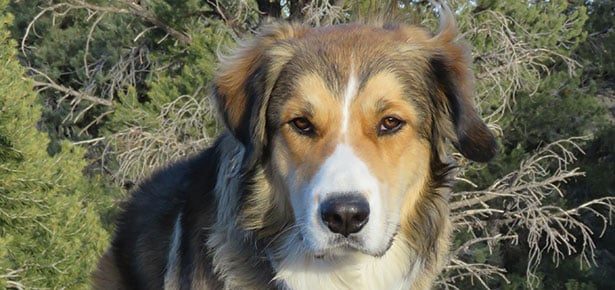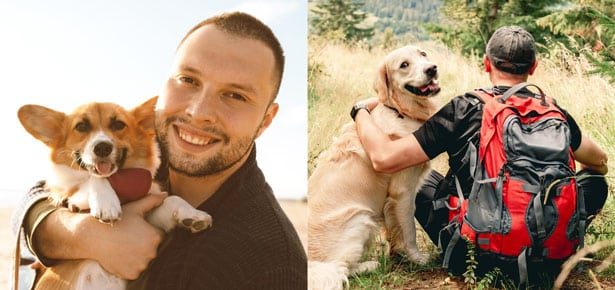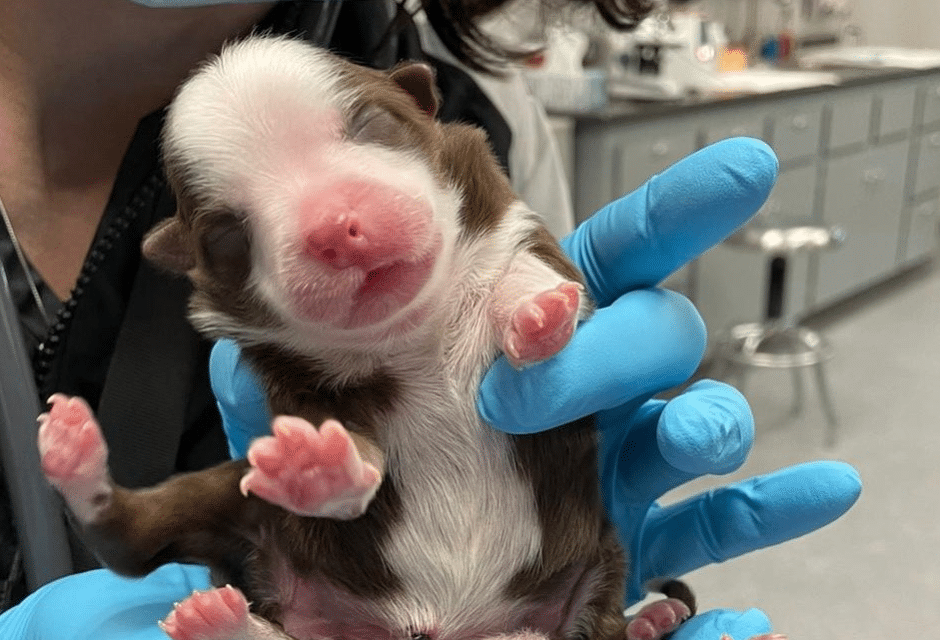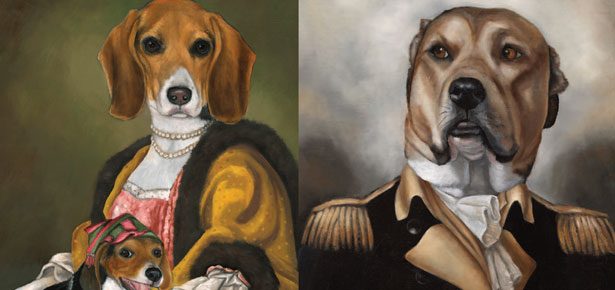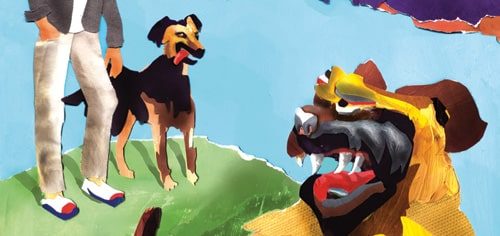
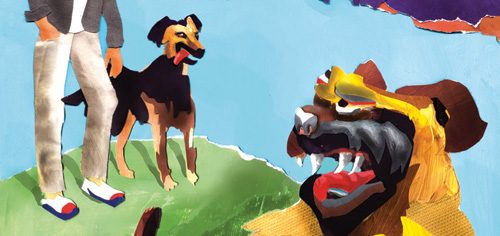
Dogs of Thunder
Rehabilitating dangerous dogs
At 130 pounds, Branka the Bullmastiff lorded over his opulent Beverly Hills estate, which each morning was visited, not by game poachers, but by peaceful
gardeners tasked to maintain the property. But to Branka, these terrified men were invaders to be stomped, mashed, mauled, and stood upon. When one of them was badly bitten and a law suit loomed, Branka found himself in leg irons, awaiting sentence.
Canine aggression comes in many forms: dominance, fear-based, hereditary, maternal, redirected, territorial, or possessive, but whatever the type, a dog on the warpath is an untenable thing, and with good cause. They are faster, stronger, and better armed than we are, and can wreak havoc, leading to their own demise.
Over the decades, I’ve worked with dogs of all shapes, sizes, breeds, and temperaments.
The hardest to deal with are the violent or terrified dogs—sometimes born that way, usually made that way. Dogs with no qualms about biting a child’s face off or killing a peaceful pet brash enough to say hello. Dogs who find themselves on the brink of euthanasia.
I have worked with dogs whose ability to kill was unmatched by anything short of a lion or bear; explosive,
steely animals who would give no warning, but simply attack, bite, and kill.
To save dogs like this takes time as well as daring, and an expertise most owners do not possess.
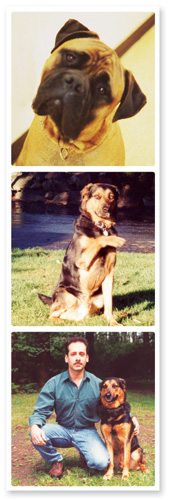
mechanisms built up over the years, concealing the good dog inside. In some cases, there is no good dog inside, but only a genetically broken tragedy in need of a peaceful end. But in most cases, these dogs of thunder can be saved.
No book or television show can teach you how to heal these dogs. Only experience can, and the ability to think out of the box. Stock techniques we use with “normal” dogs—operant or classical conditioning, shaping, chaining—often fail to get through to these dogs. It is not a task for the faint-hearted, but for those steeled to the thought that, if they cannot save the dog, the dog will die.
For years, I had a secret training weapon: a canine partner named Lou, the subject of my memoir Last Dog on the Hill (St. Martin’s Press; 2010). I had rescued Lou from a marijuana grow-op in California in 1989, after he’d lived a quasi-feral life for nearly seven months. After a destructive beginning, the Rottweiler/Shepherd mix settled in and quickly showed great intellect and heart. In his sixteen years, Lou caught rapists and robbers, saved my life numerous times, worked as a therapy dog, befriended wolves, helped teach sign language—an astonishing, cinematic life.
Lou’s most prized accomplishment was his role in helping me to rehabilitate “thunder dogs.” His feral beginnings had created a unique dynamic in his mind and heart; he’d had the opportunity to develop and respond to a sophisticated canine social dynamic. Living only with dogs, he’d learned how to cope, how far to push, when to back off. Posturing, hierarchical subtleties, stalking prey, defensive strategies—everything
a dog might need to become fluent in “canine.” Compared to “regular” dogs, he was a social genius.
So Lou became the perfect training “ambassador,” a conduit between me and aggressive, confused dogs. He socialized them, tempted them, weathered their assaults, sometimes battled them into submission, won them over. He even saved me on several occasions from Cujo-types hell-bent on my destruction.
Lou and I and a team of other trainers had three months to turn Branka from a gardener-mauling Visigoth into a reasonable companion. If we failed, he would die. I became his primary care person; I’d feed and groom him, maintain his health, and work through the first training sessions. Not a fun prospect, based upon his furious, gate-slamming behaviour.
This Bullmastiff was a dominant, spoiled, untrained musclehead. His breed-specific behaviour had been amplified by his owner’s placating attitude, and a lack of socialization, rules, activity, or routines. The dog lorded over his home like a centurion; all strangers needed to be squashed.
Had Branka been brought to aggression by fear or some other cause, my job would have been more difficult; as it was, though, I had a good chance to succeed,
provided I could convince him that I was to be obeyed, respected, and even liked. I spun a plan.
Even bullies need companionship; Branka was no different. Isolate him for a few days and even a gardener might become welcome company. I call it the “Canine Stockholm Syndrome;” eventually the captive becomes enamoured of his captors. So I kept him in an indoor-outdoor kennel with all the necessities
save company. Every hour, though, I’d visit, sit with my back to him, and read aloud from Beowulf. Yes, I read to him; angry dogs seem to like it.
He initially growled and slammed the gate with his anvil head. I ignored him. When done, I’d close the book, toss a cookie over the fence, and leave. Slowly, big bad Branka began to look forward to my appearances. His anger would at some point surrender to loneliness. Dogs are, after all, pragmatic social opportunists.
After three days, I clipped a leash on him and walked him, alone, without explicit handling demands. With my pockets full of treats, Branka and I had reached détente. I could induce simple behaviours with treats (sit, down, on-leash recall). The wild bull was being broken.
Next I double-leashed him with another trainer, and with a soft muzzle on. Double-leashing allows one trainer to give commands and work a dog in relative safety, while the other trainer simply prevents the dog from attacking the lead trainer. And vice-versa, of course; when done right, the dog cannot attack anyone. It takes practice though; a strong dog like Branka can pull you off your feet in a second and lunch on you.
I never wore protective gear during these sessions, as many dogs react fearfully to it. I wanted to mimic real-life conditions, too; no owner would walk their dog dressed up in a bite suit, so I didn’t either. I do not subscribe to the idea that, if you render a dog’s bite ineffective (through suit use), it will eventually extinguish the behaviour. I know better.
A week of double-leashing Branka evoked a few useless eruptions,
especially when we began working him in sight of other people and dogs. But there was nothing he could do about it; he simply had to cope.
Next came envy. I’d tether him to an eye hook mounted to a concrete wall. Then, 20 feet off, I’d work Lou on basic commands, and pet and play with him. Far enough away to prevent Branka from firing up (yes, he was dog-aggressive), but close enough to make him jealous. It’s an example of a “healthy stressor;” Branka now wanted to befriend me. But another thing began to happen; he saw that Lou and I liked each other.
Then the drama began. I took the Bullmastiff out to a fenced-in sheep field and let him go. I walked around and ignored him. He strutted around for a bit, ran the fence, dug a hole, looked at me. I tossed him a treat and he caught it.
Lou came out of the trees. He was fast and strong, and, unlike Branka, an expert study of the canine psyche. He knew what Branka would do, and he wasn’t afraid. I laughed and watched.
Branka charged Lou, who stood in the middle of the field sniffing
out sheep dung and watching the charging Goliath. Then Lou’s tail wagged; he knew it was time to work.
Branka roared like a lion. Lou jetted off and cut hard. He’d won agility contests before; no thundering Bullmastiff could touch him. Lou teased him, slowed down, waited, then took off just before Branka could nail him. Lou toyed with him. Like Muhammad Ali, he rope-a-doped him.
After 15 minutes, Branka collapsed into the grass. Lou stood 10 feet off. After catching his breath, Branka tried again but failed. Lou flew by me; I tossed him a cookie and he caught it in midair. Branka barked then collapsed again. Lou sat near him and waited.
We did this for three days. Finally, Branka surrendered. Lou stood close by, watching carefully. “You cannot catch him,” I said, scratching Branka’s rump. He sighed and looked up at Lou. Branka had made the first dog friend of his life.
From then on, I worked Branka with Lou by my side, and let them run in the sheep field. Without him realizing, I had created a small pack for Branka, with him at the bottom. It was a revelation;
he could have fun and feel at ease without being in charge.
We socialized him with other dogs, and worked him at parks and on the street. For us, he was now tractable. But our success had to do partly with him being removed from his home, where his aggressive mindset had taken root. Sending him back now would only reopen the problem. So we took him back to Los Angeles, and I joined the gardening crew.
I spent days teaching the family to be decent, respected owners to Branka. Then, I got the gardeners involved in training the brute.
L
ou came out of the trees. He was fast and strong, and, unlike Branka, an expert study of the canine psyche.
38 moderndog winter 2010/11
We went for fast, directed walks together; I handed the leash off each to them, and had them command and reward him. When they arrived at the house, I had the owner take Branka out to meet them at the truck, instead of having them simply walk through the gate. He got treats, pets, attention; he did down/stays, waits, leave-its, and got only earned attention. Finally, the sentence of death that had hung over him was commuted.
Branka could have never been passively
redirected into a more peaceful role; he had to be confronted with intelligence, perseverance, authority, and unyielding
doggish resolve. He was also not a dog who could have been fixed by the owners alone, even with a trainer making regular visits; he had to be re-booted first by experts, then re-homed, with expert coaching of the family. Without this, he would have been put down.
Lou and I saved hundreds of dogs threatened by the Grim Reaper. It’s an extraordinary feeling; like working the high wire without a net. But it’s also a delicate, dangerous procedure. Each case is unique, and no one “philosophy” ever works, except one which mandates flexibility, and a deep empathy for the canine condition. And, of course, a desire to deny the Reaper his due. For, truth be told, I have always been able to hear the call of those sweet dogs beneath all that thunder.
Join the newsletter and never miss out on dog content again!
"*" indicates required fields
By clicking the arrow, you agree to our web Terms of Use and Privacy & Cookie Policy. Easy unsubscribe links are provided in every email.
